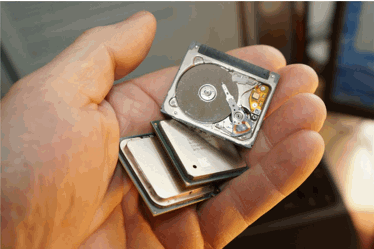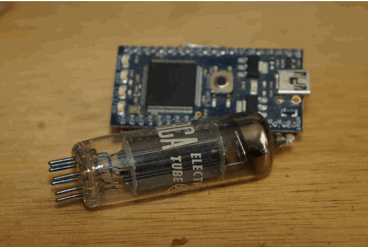By Jack Ganssle
John von Neumann Meets 2014
In the January issue of QST, a magazine (still in print!) for ham radio enthusiasts, Kay Craigie wonders what Hiram Percy Maxim would make of the ham scene if he were alive today. Maxim was the first president of the Amateur Radio Relay League when that organization was founded in 1914. Radios of that era were spark gap transmitters that needed no active elements, and were extraordinarily primitive by today's standards.
That started me wondering how one of the computer industry's early luminaries, say, John von Neumann, would view today's embedded space. Von Neumann (called "Johnny" in his day) died in 1957, when the vacuum tube still reigned nearly supreme.
His first thought might be "Where's the computer?" He helped design the biggest computer of all time, the SAGE, which occupied a half acre of floor space and weighed 250 tons. He'd be surprised by devices like the PIC10, which is available in a six-pin 2 x 3 mm DFN package. His hand could even hold dozens of the biggest processors around, like Intel's high-end devices.

A couple of Pentiums with a 1 GB disk. The RAMAC, the hard disk of von Neumann's era, held 5 MB and weighed more than a ton.
If he looked at a DSP he might ask "Harvard architecture? What happened?" We'd have to reassure him that, yes, the von Neumann architecture still dominates but isn't always the most appropriate choice.
I'm sure he'd want a computer of his own, and would immediately start writing a grant application to get the government funds needed. After all, that SAGE system cost about $90 billion in today's deflated dollars (that figure includes 24 two-computer systems). He'd probably be too stunned to crack one of his famous ribald jokes when told that a 32 bit MCU could be had for half a buck or less.
Von Neumann might squint and wonder how many tubes were packed into a modern processor. In his era nearly all computers were based on tubes, thousands of them, which is why machines were so huge.

A triode and a 32-bit computer.
But Johnny was surely aware of the transistor, and would have realized that semiconductors were much smaller than tubes. He'd probably wonder, though, what clever design had reduced the needed transistor count so much that a computer could exist in a chip. Imagine his jaw dropping when told that, no, actually some of these parts contain billions of active elements.
We complain when a machine crashes; we're surprised when one fails. It's common for a PC to run for years between hardware failures, which would probably surprise von Neumann. The IAS computer, built under his supervision, reportedly (http://www.rand.org/content/dam/rand/pubs/research_memoranda/2005/RM5654.pdf) had an MTBF of 10 minutes, and there was a raging debate about just how much useful computation could be done within this limit.
He'd also be surprised at our I/O; the notion of a GUI just didn't exist in his lifetime. His 1953 Johnniac initially had just a card reader and punch... plus a loudspeaker to give a sense of what was going on. It wasn't long before card decks were produced to play popular tunes. The stereo and full-motion video we take for granted would probably astound him. (He objected to the computer's name, but the lead engineer let him know there were plenty of other Johns in the world; what made von Neumann think it was named after him?)
At least one thing would be familiar. His computers dissipated heat. A lot of it. That hasn't changed in the high-end spectrum of computers today.

